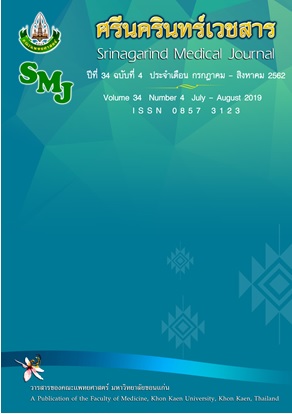Reliability of Five-Timed-Sit-to-Stand Test by Kinect Timed Camera in Young Adults
Keywords:
Kinect camera; five-time-sit-to-stand test; MFU fall risk detection softwareAbstract
Background and objective: The purpose of this study was to investigate the between-days test-retest reliability of the Kinect camera when used to administer the five-timed-sit-to-stand test (FTSST) in young adults.
Methods: Nineteen participants participated in this study. They performed the FTSST (five repetitions of the sit to stand movement, performed as quickly as possible, with the arms crossed) on two occasions, 7 days apart. The times for the FTSST were recorded by both Kinect camera, with bespoke MFU fall risk detection software, and by a clinical stopwatch. A between-days test-retest analysis was then undertaken. Intra-class correlation coefficients (ICC3,1 and ICC2,k) were used to analyze the data for test-retest reliability, and the agreement between the FTSST times measured by the Kinect camera and clinical stopwatch.
Results : Excellent test-retest between-day reliability was found for the Kinect camera for the FTSST (ICCs = 0.840), and a minimal detectable change of 0.304 seconds was found for test-retest reliability. An excellent agreement was also found for the FTSST times as measured by the Kinect camera and clinical stopwatch (ICCs = 0.915).
Conclusion : The Kinect camera is a reliable tool for between-days administration of the FTSST in young adults.
References
2. Springer S, Yogev Seligmann G. Validity of the Kinect for Gait Assessment: A Focused Review. Sensors (Basel) 2016; 16: 194.
3. Ejupi A, Brodie M, Gschwind YJ, Lord SR, Zagler WL, Delbaere K. Kinect-Based Five-Times-Sit-to-Stand Test for Clinical and In-Home Assessment of Fall Risk in Older People. Gerontology 2015; 62: 118-24.
4. Kaewkaen K, Wongsamud P, Ngaothanyaphat J, Supawarapong P, Uthama S, Ruengsirarak W, et al. The Influence of Audio-Visual Cueing (Traffic Light) on Dual Task Walking in Healthy Older Adults and Older Adults with Balance Impairments. Malays J Med Sci 2018; 25: 67-74.
5. Kaewkaen K, Chuethaeo T, Angart S, Chomkan S, Uttama S, Ruengsirarak W, Chai-ut W, Narmkorn P, Sutalangka C. The effect of dual task on lower limb joint kinematics during obstacle crossing in young and healthy older adults. Srinagarind Med J 2018; 33: 329-35.
6. Kaewkaen K. Utthama S, Ruengsirarak W, Kaewkaen P. Test-retest reliability of the five-timed-sit-to-stand test by the Kinect in older adults. J Assoc Medl Sci (inpress)
7. Bujang MA, Baharum N. A simplified guide to determination of sample size requirements for estimating the value of intraclass correlation coefficient: a review. Arch Orofac Sci 2017: 12: 1-11.
8. Portney LG, Watkins MP. Foundations of clinical research: applications to practice. 3rd ed. Upper Saddle River, NJ: Pearson Education, Inc; 2009.
9. Clark RA, Vernon S, Mentiplay BF, Miller KJ, McGinley JL, Pua YH, et al. Instrumenting gait assessment using the Kinect in people living with stroke: reliability and association with balance tests. J Neuroeng Rehabil 2015;12:15.
10. Vernon S, Paterson K, Bower K, McGinley J, Miller K, Pua YH, et al. Quantifying individual components of the timed up and go using the kinect in people living with stroke. Neurorehabil Neural Repair 2015; 29: 48-53.
11. Milanovic Z, Pantelic S, Trajkovic N, Sporis G, Kostic R, James N. Age-related decrease in physical activity and functional fitness among elderly men and women. Clin Interv Aging. 2013; 8: 549-56.
12. Teo WL, Mong Y, Ng SSM. The repetitive Five-Times-SitTo-Stand test: its reliability in older adults. International Journal of Therapy and Rehabilitation 2013; 20: 122-32.




